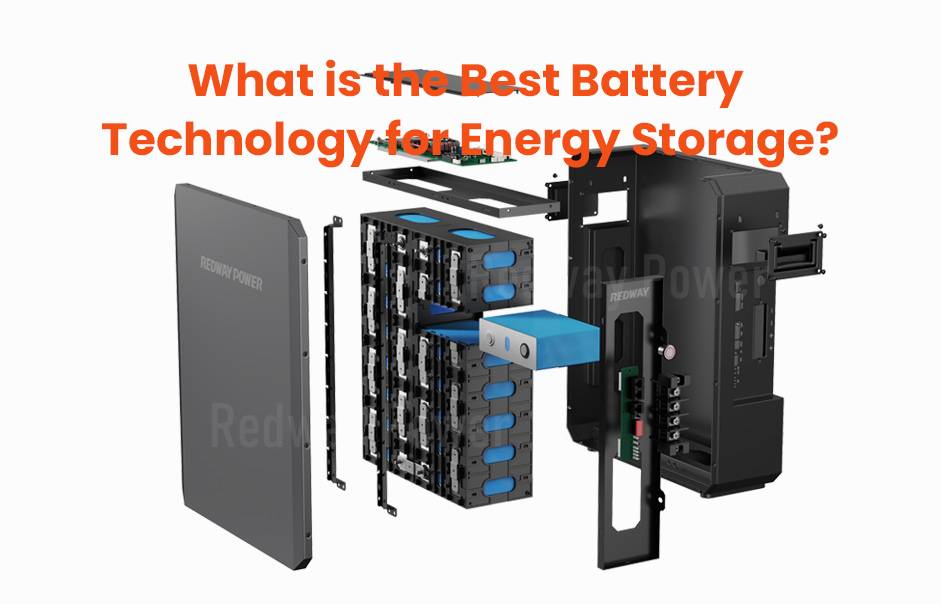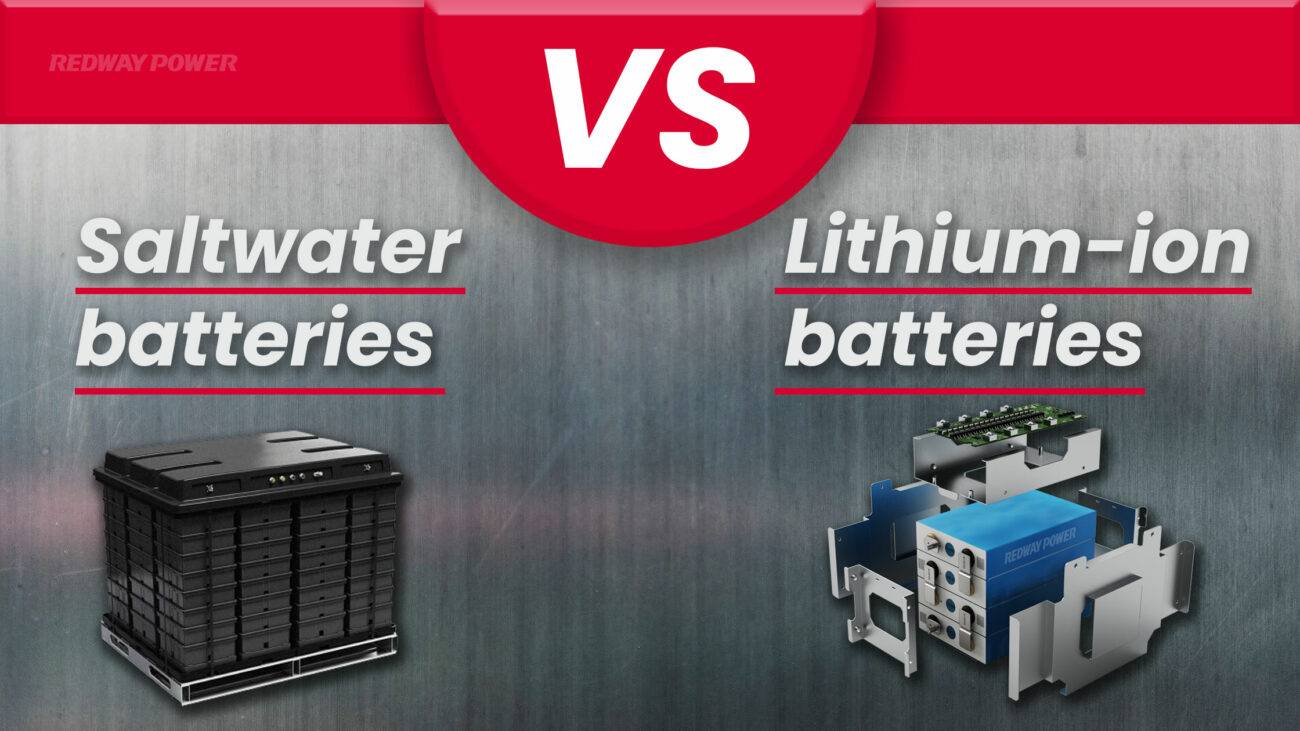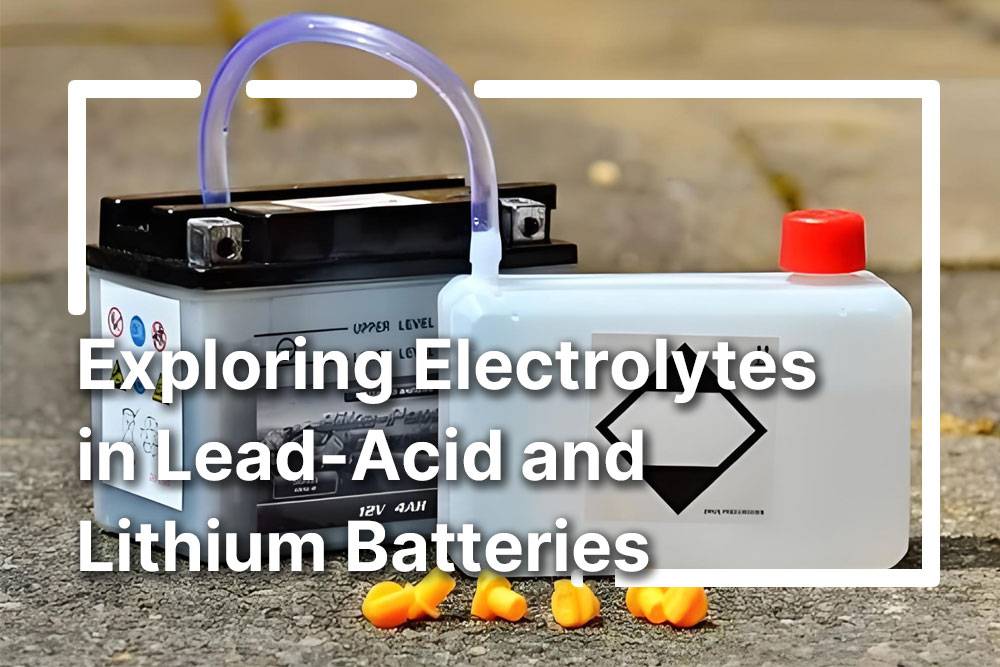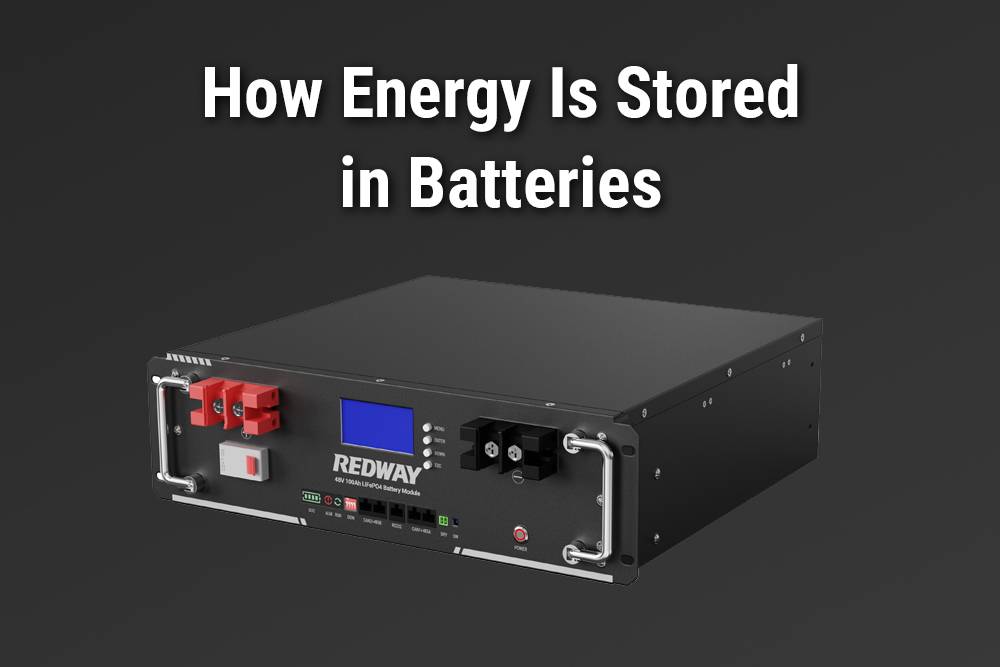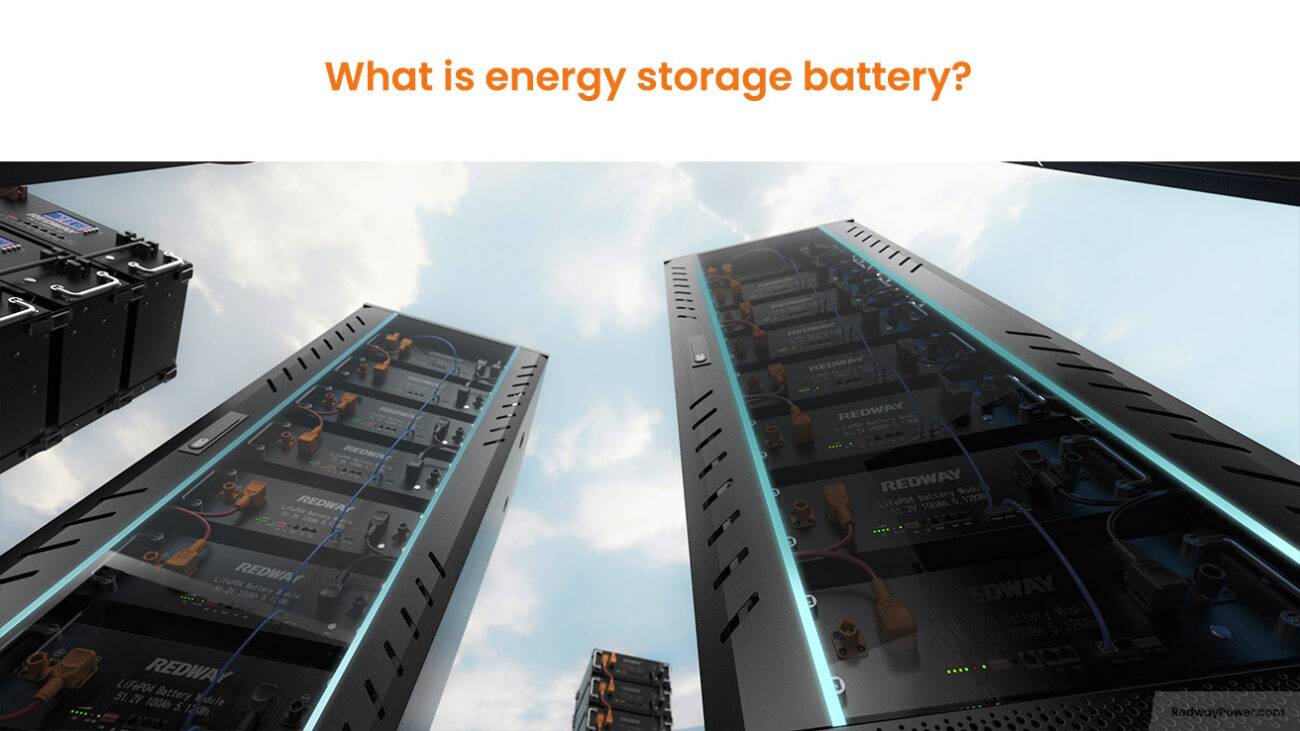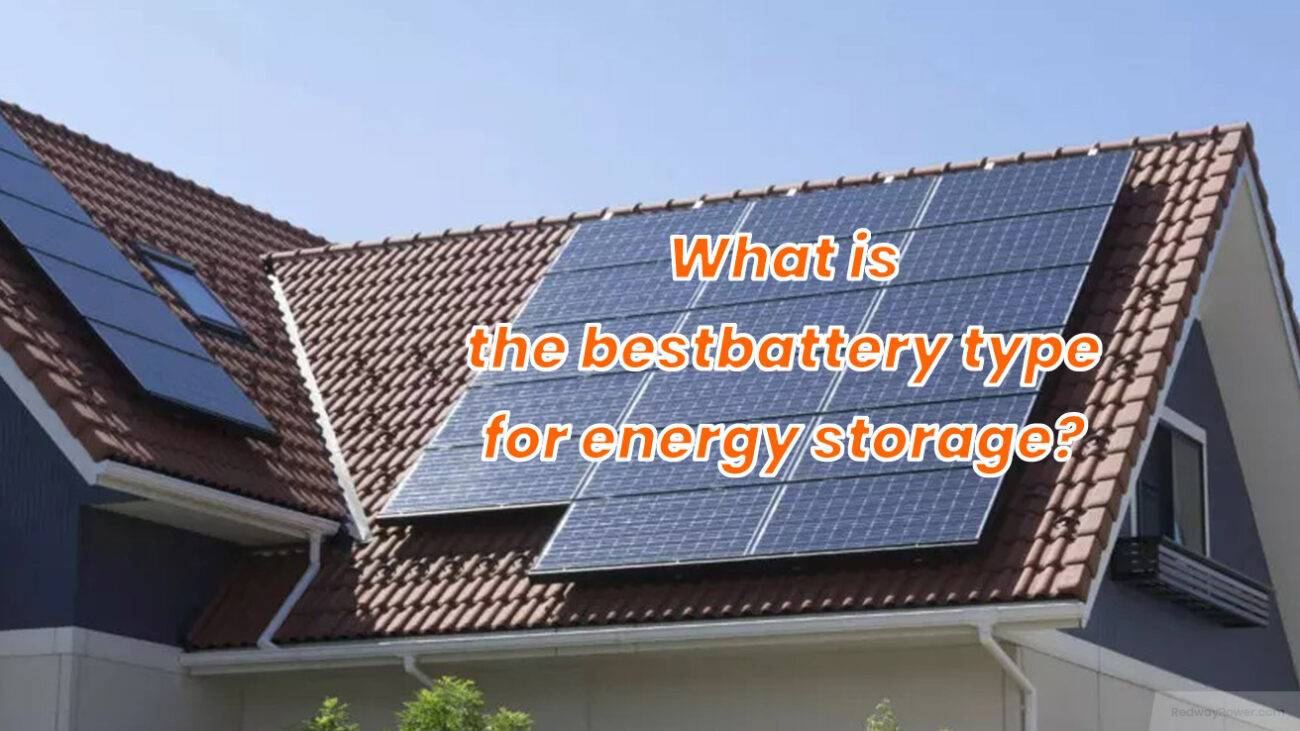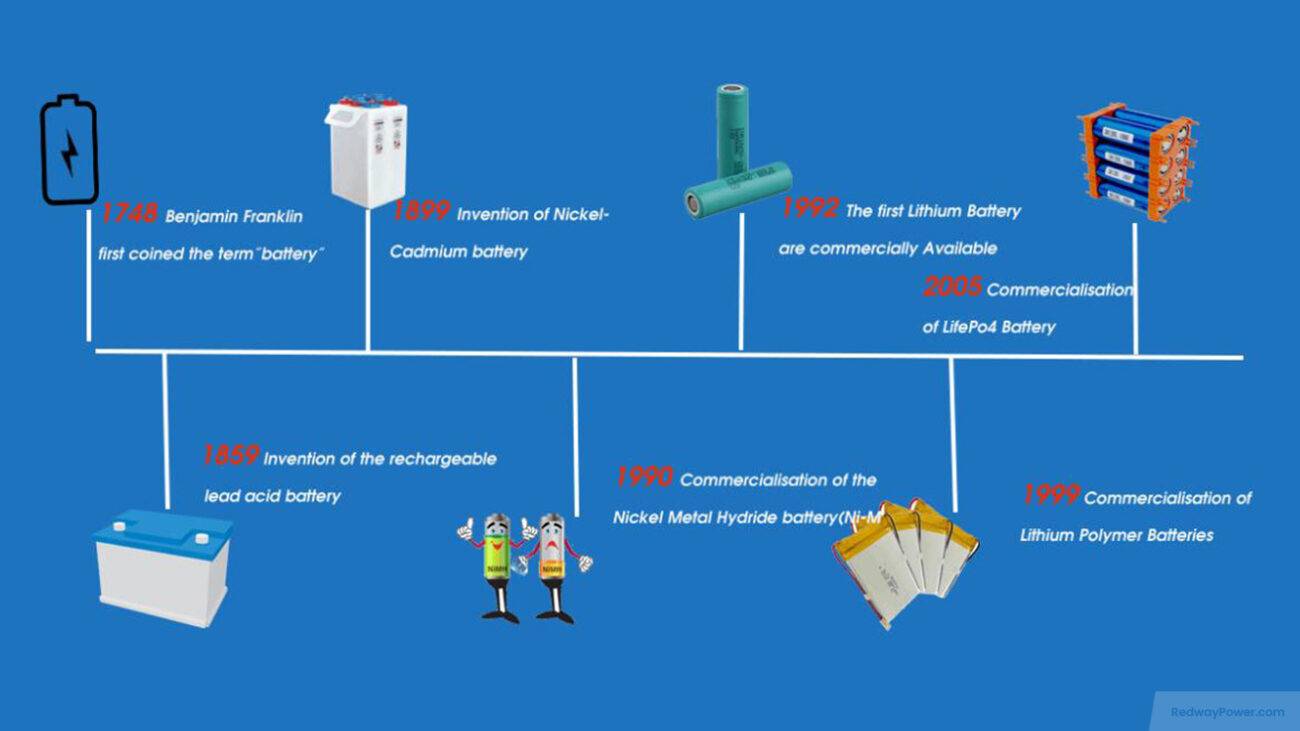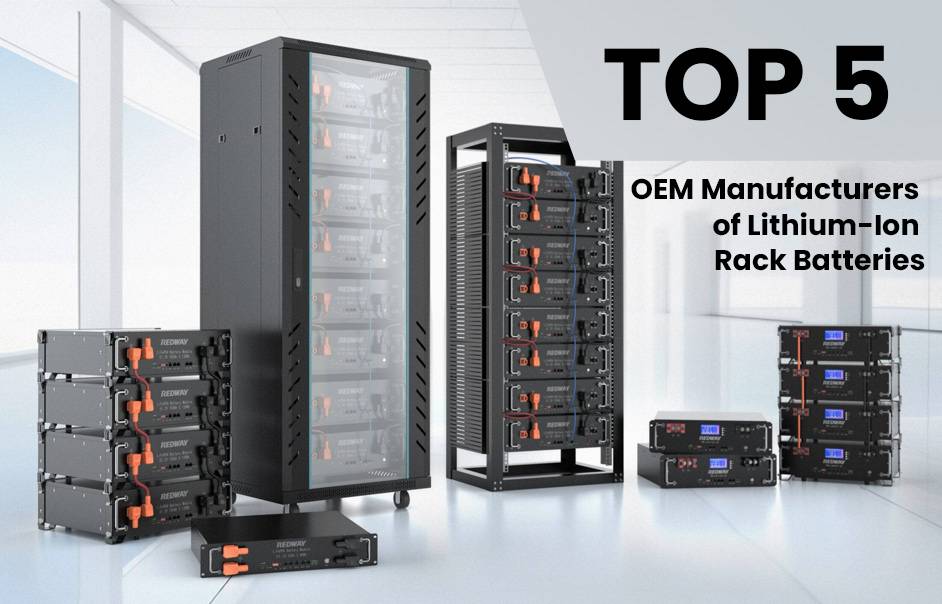Explore the dynamic world of energy storage in our blog post. As renewable energy gains momentum, efficient methods of storing it become crucial. Dive into battery technology, a game-changer for sustainable energy solutions. From classic lead-acid to cutting-edge solid-state batteries, we’ll unravel their pros and cons, shedding light on the future of energy storage. Charge up your curiosity and embark on this electrifying journey with us!
Importance of Energy Storage
Imagine a sunny day with solar panels generating electricity, but what about when the sun sets? Enter energy storage, a hero bridging the gap between renewable energy and consumption. It captures excess energy for later use, ensuring uninterrupted power during low production and enhancing grid stability. Energy storage aids in integrating renewables, curbing emissions, and offering financial benefits. As battery technologies evolve, exciting developments lie ahead in our quest for sustainable solutions. Stay tuned for a deeper dive into specific battery technologies!
Types of Battery Technologies
Explore various battery technologies for energy storage, each with unique advantages and drawbacks.
- Lead-Acid Batteries:
- Reliable and cost-effective.
- Limited lifespan and requires regular maintenance.
- Lithium-Ion Batteries:
- Popular for high energy density and longer lifespan.
- Used in electronics and electric vehicles.
- Expensive with safety concerns related to overheating.
- Flow Batteries:
- Scalable with easily increased capacity.
- Longer cycle life, but larger in size and complex control systems.
- Solid-State Batteries:
- Emerging technology with high energy density.
- Offers improved safety, faster charging, and longer lifespan.
- Still in early stages, facing challenges in manufacturing scale-up.
In conclusion, the best battery technology for energy storage depends on factors like cost, performance requirements, application-specific needs, and ongoing advancements in battery technology. Choose wisely for optimal results in your energy storage solutions!
Lead-Acid Batteries: Pros and Cons
Explore the long-standing lead-acid batteries, a cost-effective and widely available energy storage option.
- Advantages of Lead-Acid Batteries:
- Low cost and proven track record.
- Established technology with wide availability.
- Drawbacks of Lead-Acid Batteries:
- Relatively short lifespan and degradation over time.
- Heavy and bulky, limiting applications with space constraints.
- Requires regular maintenance, adding to overall system costs.
- Efficiency Concerns:
- Poor efficiency in charging and discharging cycles.
- Higher energy loss compared to newer technologies.
In conclusion, while lead-acid batteries remain affordable and familiar, advancements in battery storage call for careful consideration of alternatives based on specific needs and technological advancements. Choose wisely for optimal performance in your energy storage solutions!
Lithium-ion Batteries: Pros and Cons
Explore the advantages and considerations of lithium-ion batteries for energy storage.
- Advantages of Lithium-Ion Batteries:
- High energy density, ideal for limited-space applications.
- Long lifespan with a higher cycle life for cost-effectiveness.
- Fast charging capability, reducing downtime.
- Drawbacks of Lithium-Ion Batteries:
- Sensitivity to high temperatures, risking degradation or failure.
- Relatively higher initial costs, though decreasing with technological advancements.
- Conclusion:
- Lithium-ion batteries offer a compelling choice for energy storage with their high energy density, long lifespan, and fast charging capabilities. Despite sensitivity to heat and initial costs, the overall benefits make them an attractive option for various applications. Choose wisely based on your specific needs and considerations.
Flow Batteries: Pros and Cons
Explore the pros and cons of flow batteries, a distinctive rechargeable battery technology.
- Pros of Flow Batteries:
- Scalability for easy adjustment in size, ideal for large-scale energy storage.
- Long cycle life, suitable for applications requiring longevity.
- Cons of Flow Batteries:
- Lower power density compared to lithium-ion or lead-acid batteries.
- Higher upfront costs due to larger infrastructure and complex designs.
- Maintenance and operation costs may accumulate over time.
In conclusion, while flow batteries excel in scalability and cycle life, they may not be optimal for high-power applications or situations where cost-effectiveness is crucial. Consider your specific needs and priorities when choosing an energy storage solution.
Solid-State Batteries: Pros and Cons
Explore the promising technology of solid-state batteries with its advantages and challenges.
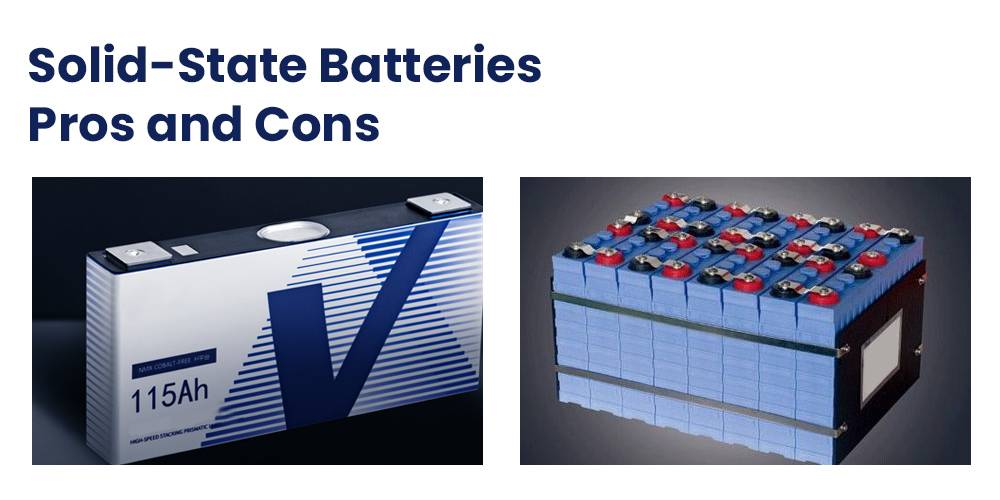
- Advantages of Solid-State Batteries:
- Higher energy density in a compact, lightweight package.
- Longer lifespan and increased resistance to overheating and fires.
- Improved charging speed due to quick ion movement in solid materials.
- Environmentally friendly, devoid of toxic materials.
- Challenges of Solid-State Batteries:
- High production costs from complex manufacturing processes.
- Limited scalability.
- Issues with low conductivity at interfaces within the battery structure.
- Future Outlook:
- Ongoing research aims to overcome challenges.
- With advancements in materials science and engineering, significant improvements in performance and affordability are expected in the near future.
Consider the potential benefits and challenges of solid-state batteries as this technology evolves toward broader applications in energy storage.
The Future of Battery Technology for Energy Storage
Explore the future of battery technology for energy storage, filled with innovation and possibilities.
- Enhancing Energy Density:
- Focus on increasing the amount of energy stored per unit volume or weight.
- Enables more efficient and compact battery systems for versatile deployment.
- Solid-State Batteries:
- Solid electrolytes replace liquid or gel-based ones, offering higher energy density, improved safety, and longer lifespan.
- Materials Science Advancements:
- Research into alternative materials like graphene and silicon to boost battery performance.
- Recycling Optimization:
- Efforts to optimize recycling processes for environmental sustainability and cost-effectiveness.
- Recovering and reusing valuable resources like lithium and cobalt.
- Diverse Technologies for Varied Needs:
- Recognition that there is no one-size-fits-all solution for energy storage.
- Each technology has specific strengths based on factors like cost-effectiveness or high-power output requirements.
- Continuous Technological Advancements:
- Ongoing research collaborations, industry partnerships, and investment in R&D initiatives.
- Innovation across various sectors, government incentives, and policy support driving adoption of sustainable solutions to meet future energy needs.
Embrace the evolving landscape of battery technology, where ongoing research, collaboration, and innovation pave the way for a sustainable energy future.
FAQs
What are the technical challenges and delays in volume manufacturing of lithium-ion polymer batteries?
The technical challenges and delays in volume manufacturing of lithium-ion polymer batteries primarily revolve around the deferred introduction of this battery type due to various technical difficulties. Despite the initial promise of superior performance, including advantages such as wafer-thin geometries essential for the competitive mobile phone industry, these benefits have not yet been fully realized in practice. Furthermore, issues persist in achieving significant capacity gains with lithium-ion polymer batteries, with some cases indicating slightly inferior capacity compared to standard lithium-ion batteries. As a result, the viability and cost-effectiveness of lithium-ion polymer batteries in mass production currently face obstacles that hinder their widespread adoption in the market.
What are the unique characteristics of lithium polymer batteries in terms of form factor and safety?
Lithium polymer batteries are distinguished by the use of a dry solid polymer electrolyte, which sets them apart from other battery systems. This polymer electrolyte, which resembles a film, allows for the exchange of ions while not conducting electricity. The absence of a liquid or gelled electrolyte eliminates the risk of flammability, enhancing the safety of lithium polymer batteries.
Moreover, the dry polymer design simplifies the manufacturing process, enhances durability, and contributes to a thin profile of the battery cells. These batteries can have a thickness of as little as one millimeter, providing equipment designers with flexibility in creating different form factors and sizes. The unique characteristics of lithium polymer batteries, such as their thinness, safety features, and flexibility in shape and size, make them a popular choice for various applications.
What are the advantages and limitations of lithium polymer batteries compared to lithium-ion batteries?
Lithium polymer batteries differ from lithium-ion batteries primarily in the type of electrolyte utilized. While lithium-ion batteries feature a liquid electrolyte, lithium polymer batteries use a dry solid polymer electrolyte. The dry polymer design provides advantages such as simplified fabrication, enhanced safety, and a thin-profile geometry. However, one drawback of the dry lithium polymer design is its poor conductivity, which is typically addressed by incorporating a gelled electrolyte.
Most commercial lithium polymer batteries currently in use, especially in mobile phones, are hybrids that combine the solid polymer and gelled electrolyte. Despite similarities in performance and characteristics between lithium-ion and lithium polymer batteries, the latter stands out due to the solid electrolyte replacing the porous separator. One claimed benefit of lithium polymer batteries is their potential for superior form factors, allowing for wafer-thin designs that cater to the demands of competitive industries like mobile phones.
However, technological advancements have not fully realized the promised advantages of lithium polymer batteries. In terms of capacity gains, lithium polymer batteries generally do not outperform standard lithium-ion batteries, sometimes even falling slightly short. Additionally, there is currently no cost advantage associated with lithium polymer batteries over their lithium-ion counterparts. Ultimately, the primary motivating factor for transitioning to lithium polymer batteries tends to be their capacity for innovative form factors rather than significant improvements in performance or cost efficiency.
What are the main differences between cylindrical 18650 cells, prismatic cells, and Li-ion polymer cells?
Cylindrical 18650 cells, prismatic cells, and Li-ion polymer cells are three common types of Li-ion batteries with distinct characteristics suited for different applications.
18650 cells are known for their cost-effectiveness in terms of cost-to-energy ratio and are popularly used in mobile computing and similar applications that do not require ultra-thin designs. Prismatic cells, on the other hand, are preferred when a slimmer pack is necessary, typically thinner than 18 mm. While prismatic cells yield no higher energy density than 18650 cells, they may come at a higher cost to achieve a similar energy output.
Li-ion polymer cells are the go-to choice for ultra-slim geometries, particularly thicknesses less than 4 mm. Despite being the most expensive among the three types in terms of cost-to-energy ratio, Li-ion polymer cells offer the advantage of ultra-slim designs that the other types cannot match. However, Li-ion polymer cells do not provide any energy density gains, and their durability is typically inferior to the more rugged 18650 cells.
What are the recommended storage conditions for lithium-ion batteries?
The recommended storage conditions for lithium-ion batteries include storing them in a cool place to slow down the aging process. Manufacturers advise keeping the batteries at a temperature of around 15°C (59°F) and ensuring they are partially charged during storage. These conditions help maintain the battery’s optimal performance and longevity.
What are the key factors affecting the aging of lithium-ion batteries?
The aging of lithium-ion batteries is influenced by several key factors. Capacity deterioration is commonly observed within the first year of use, regardless of whether the battery is actively being used. Typically, after two to three years, lithium-ion batteries commonly experience failure. It is important to note that other battery chemistries also exhibit age-related degenerative effects, such as Nickel Metal Hydride (NiMH) batteries when exposed to high temperatures. To slow down the aging process, it is recommended to store lithium-ion batteries in cool environments, with manufacturers suggesting storage temperatures around 15°C (59°F). Additionally, keeping the battery partially charged during storage can also help maintain its longevity.
What are the limitations of lithium-ion batteries?
The limitations of lithium-ion batteries include the need for a protection circuit, which can restrict voltage and current flow. They are prone to aging even when not in use, but storing them in a cool environment at 40 percent state-of-charge can decrease the aging process. These batteries have moderate discharge current capacities and are subject to transportation regulations when shipped in large quantities. Additionally, lithium-ion batteries are more expensive to manufacture compared to other types such as NiCd, but advancements in manufacturing techniques and the use of more cost-effective materials are expected to reduce their production costs. Moreover, lithium-ion battery technology is not fully mature, as alterations in metal and chemical combinations can impact battery test results, particularly with certain rapid testing methods.
What are the advantages of lithium-ion batteries over other battery chemistries?
Lithium-ion batteries offer several key advantages over other battery chemistries. Firstly, they possess high energy density, enabling the potential for even higher capacities compared to alternatives. Additionally, lithium-ion batteries have relatively low self-discharge rates, meaning they lose energy at less than half the rate of Nickel Cadmium (NiCd) and Nickel Metal Hydride (NiMH) batteries. Another significant advantage is the low maintenance required for lithium-ion batteries. Unlike some other chemistries, lithium-ion batteries do not need periodic discharge to prevent memory effect, simplifying their upkeep.
What is unique about gold nanowire gel electrolyte batteries and how do they differ from conventional batteries?
Gold nanowire gel electrolyte batteries are distinctive due to their use of gels as an electrolyte, which offers a safer alternative to traditional liquid electrolytes that are prone to combustion. In these batteries, gold nanowires are coated with manganese dioxide and then covered with an electrolyte gel, enhancing their durability. Unlike typical nanowires that are fragile, the gold nanowires in these batteries have proven to be resilient even after undergoing numerous charge-discharge cycles. This resilience is showcased by the ability of these batteries to endure up to 200,000 cycles without a significant decrease in their charge-holding capacity, far surpassing the cycle life of only 6,000 cycles seen in conventional batteries.
How do organosilicon electrolyte batteries address safety concerns with lithium batteries?
Organosilicon electrolyte batteries address safety concerns with lithium batteries by utilizing safer electrolytes made of organosilicon-based liquid solvents instead of the traditional carbonate-based solvent system found in Li-ion batteries. These innovative electrolytes, developed by University of Wisconsin-Madison chemistry professors Robert Hamers and Robert West, are engineered at the molecular level to cater to the industrial, military, and consumer Li-ion battery markets. The primary goal of this development is to reduce the risks associated with current lithium batteries, such as fire hazards and explosions, providing a reliable and secure alternative for battery users.
How do NanoBolt lithium tungsten batteries work and what benefits do they offer?
NanoBolt lithium tungsten batteries operate by utilizing a specialized design that involves the integration of tungsten and carbon multi-layered nanotubes bonded to a copper anode substrate, creating a nanostructured web-like configuration. This unique structure maximizes the surface area available for ions to adhere to during both charging and discharging processes. As a result, these batteries facilitate faster recharging speeds and enhanced energy storage capacity. The key benefits of NanoBolt lithium tungsten batteries include the ability to store larger amounts of energy and to recharge at an accelerated pace, making them a proficient choice for applications requiring efficient and high-performance energy solutions.
How do TankTwo String Cell™ batteries aim to revolutionize the recharging process for electric vehicles?
TankTwo’s innovative String Cell™ batteries are designed with the goal of transforming the recharging process for electric vehicles. By utilizing a modular approach, these batteries are composed of small independent self-organizing cells within a plastic enclosure that can easily connect with one another through a conductive material. The internal processing unit within each cell manages the connections in the electrochemical cell.
One of the key features that sets TankTwo’s batteries apart is the ability to facilitate rapid charging for electric vehicles. This is achieved by a unique process where the cells, filled with tiny balls, can be swiftly extracted and swapped for fully charged cells at a service station. By enabling this quick exchange of cells, drivers can reduce the time needed to recharge their electric vehicles significantly.
Furthermore, the service station’s operation to recharge the cells occurs during off-peak hours, which not only enhances the efficiency of the recharging process but also contributes to overall energy savings. This approach not only benefits electric vehicle owners by providing a more convenient and time-saving recharging experience but also supports a more sustainable energy usage model.
What is the unexpected chemical conversion reaction found in zinc-manganese oxide batteries?
The unexpected chemical conversion reaction discovered in zinc-manganese oxide batteries involves a novel process that was identified by a team at the DOE’s Pacific Northwest National Laboratory. This reaction has the potential to enhance the energy density of traditional batteries without necessitating an increase in cost. By gaining control over this chemical conversion reaction, researchers hope to significantly improve the performance and efficiency of zinc-manganese oxide batteries.
Which companies are leading in battery recycling, and where are new facilities being built?
Currently, Chinese companies such as CATL are at the forefront of battery recycling. However, the industry is expected to witness substantial growth in other key electric vehicle (EV) markets like North America and Europe. In North America, Nevada-based Redwood Materials is actively building new recycling facilities, while in Toronto, Li-Cycle is also expanding its operations. Li-Cycle is in the process of commissioning its primary recycling plant, which is scheduled to be operational by 2023. On the other hand, Redwood Materials has already commenced production at its facility in Nevada and has unveiled plans to construct a new facility in Charleston, South Carolina.
What key ingredients in lithium-ion batteries are in high demand, and how is battery recycling being addressed?
The high demand for lithium-ion batteries has led to an increasing need for key ingredients such as lithium, cobalt, and nickel. Battery recycling is becoming a crucial aspect of addressing this demand, with companies and industries focusing on ways to extract and purify these valuable materials for reuse in new batteries. Notably, companies like CATL and others in China have been at the forefront of battery recycling efforts, but there is a growing interest and potential for significant growth in battery recycling facilities in major electric vehicle markets like North America and Europe. Initiatives by organizations such as Nevada-based Redwood Materials and Li-Cycle highlight the importance of separating and purifying key battery metals to promote sustainability and reduce the dependency on new resources.
What is the Inflation Reduction Act and what impact does it have on climate and clean energy funding?
The Inflation Reduction Act, approved in late 2022, is a legislative measure that allocates a substantial budget of approximately $370 billion towards climate and clean energy initiatives. This Act includes a significant focus on supporting electric vehicle (EV) and battery manufacturing, with the aim of bolstering the green energy sector. Notably, the Inflation Reduction Act aims to provide financial assistance in the form of loans and grants to battery manufacturers within the United States. By offering support to these companies, the Act seeks to enhance the domestic capacity for producing batteries, which are crucial components of EVs and other clean energy technologies.
Moreover, the Inflation Reduction Act introduces tax credits for EVs, encouraging automakers to prioritize sourcing battery materials from the United States or its trade partners with minimal restrictions. This incentive is designed to stimulate the local production of batteries in North America, thereby reducing reliance on imports and promoting a sustainable supply chain. As a result of the financial backing provided by the Inflation Reduction Act and the incentives outlined in the EV tax credits, automotive companies are anticipated to announce expansions in their manufacturing capacities in the U.S. and explore innovative strategies for procuring materials in a more eco-friendly manner. Ultimately, the Inflation Reduction Act plays a critical role in advancing climate and clean energy initiatives by fostering a supportive environment for the development and production of essential components for sustainable technologies.
How is the flood of money from the IRA and other policies fueling demand for EVs and their batteries in 2024?
The surge of financial support coming from the IRA and various other policy initiatives plays a crucial role in driving the demand for electric vehicles (EVs) and their batteries in 2023. Specifically, the IRA is facilitating this demand by providing loans and grants to battery manufacturers in the United States, thus bolstering production capacity. Moreover, the inclusion of EV tax credits in the legislation is incentivizing automakers to procure battery materials either domestically in the US or from its free-trade partners, further encouraging the manufacturing of batteries in North America. This infusion of financial resources from the IRA and other global policies is creating a significant momentum that is expected to make 2023 a pivotal year to monitor in terms of the EV market.
How does the IRA support battery makers in the US and incentivize automakers to manufacture batteries in North America?
The IRA supports battery makers in the US by offering financial assistance through loans and grants, which helps increase their production capacity. Furthermore, by providing EV tax credits within the legislation, the IRA motivates automakers to consider sourcing battery materials from the US or its free-trade partners, and this ultimately encourages them to establish battery manufacturing facilities in North America.
How is the focus shifting within the standard lithium-ion battery technology to reduce costs related to cathode materials?
Increasing the amount of energy stored per unit volume or weight is a key focus. This enables more efficient and compact battery systems for versatile deployment. Solid-State Batteries are emerging as a promising technology with solid electrolytes replacing liquid or gel-based ones. This shift offers higher energy density, improved safety, and longer lifespan. Research into alternative materials like graphene and silicon aims to boost battery performance while efforts to optimize recycling processes for environmental sustainability and cost-effectiveness are ongoing. Recovering and reusing valuable resources like lithium and cobalt are part of this optimization process. The future outlook includes diverse technologies for varied needs, acknowledging that there is no one-size-fits-all solution for energy storage. Continuous technological advancements driven by research collaborations, industry partnerships, and investment in R&D initiatives are paving the way for a sustainable energy future.
Additionally, the focus on material innovations is driving significant changes in the industry. Motivated by cost considerations and market trends, companies are exploring alternative cathode materials such as lithium iron phosphate (LFP) to reduce expenses and improve battery performance. The transition from traditional graphite anodes to silicon-based alternatives is also gaining traction for its potential to enhance energy density and charging speed. Market leaders like Tesla, Ford, and Volkswagen are already embracing these advancements, with Tesla incorporating LFP batteries in its vehicles and partnerships forming between companies like Sila and major automakers for the production of silicon anodes. These strategic partnerships and advancements in material science not only aim to enhance battery performance but also contribute to lowering costs and driving the industry towards a more sustainable future.

